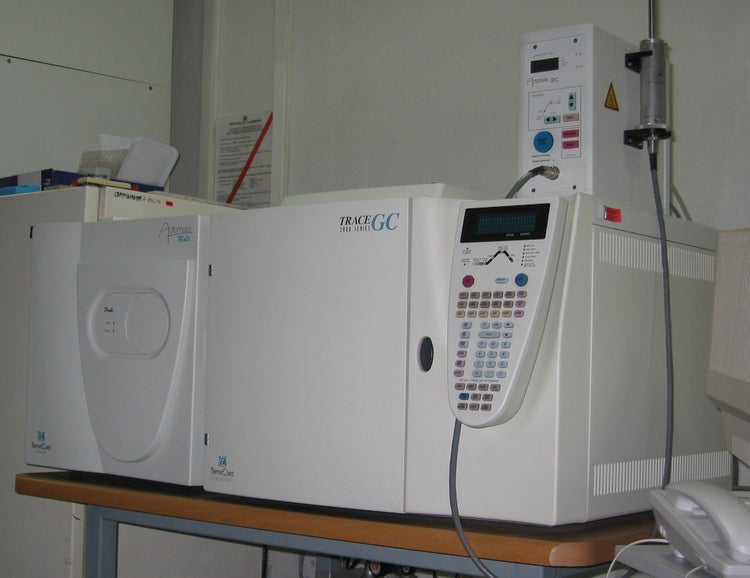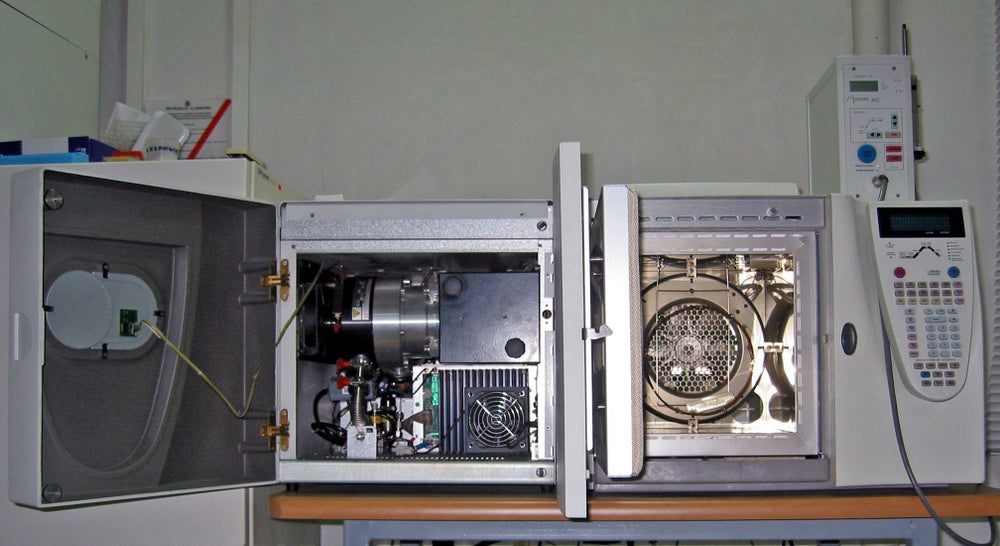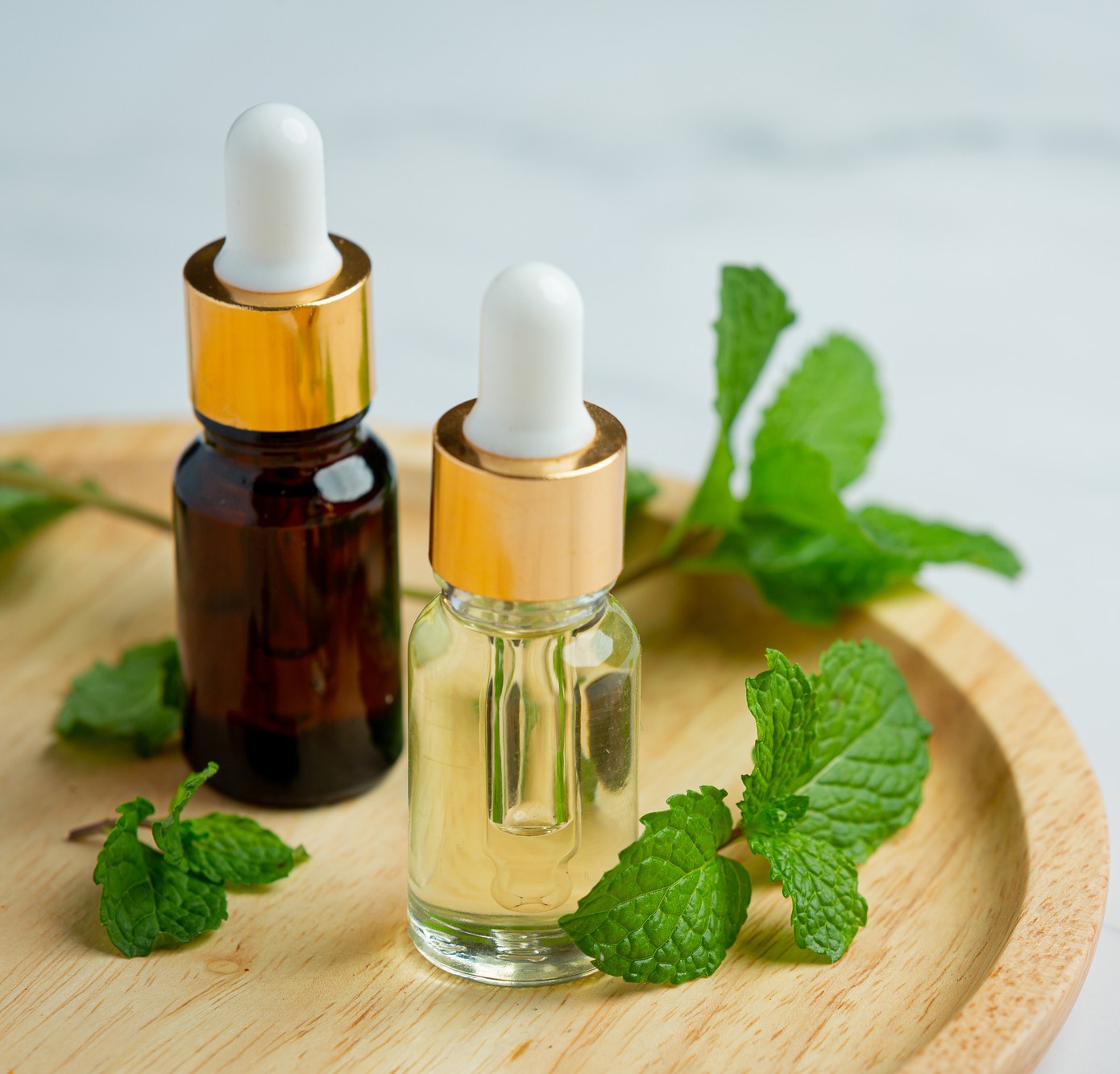If you are wondering what GCMS is all about, here is a brief writeup. Essential oils are very complex from a chemical point of view. They are volatile, aromatic, oil soluble liquids obtained by steam distillation, or hydrodistillation of botanicals, although certain cold-pressed citrus oils are also considered to be essential oils and they are the only non-distilled oils considered to be essential oils.

WHAT IS GCMS (GC/MS OR GC-MS)?
It stands for Gas Chromatography/Mass Spectrometry. GC-MS can be used to study liquid, gaseous or solid samples. In the world of essential oils, it is indeed the core of any valuable quality control procedure applied to essential oils, though there are other analytical tools that can also be used, with varying degrees of relevance.

Example of a GC-MS instrument
Gas Chromatography (GC)
The main purpose of any chromatographic process is to separate compounds so that they can be studied independently from the others. Essential oils are made of dozens and often hundreds of molecules that are volatile and readily shift to a gas phase. This makes gas chromatography the most logical tool of choice to study essential oils, and so fundamental in the matter of quality control. It does, however, have its limitations - primarily because its operation relies on gases. A gas chromatograph, on its own, only separates the molecules and then releases them. It does not give any information on what they are and how much of each compound is present.

GC-MS Schematic
Mass Spectrometry (MS)
This is where the detector (Mass Spectrometry) comes into play, where trillions of molecules are broken down simultaneously into fragments, individually sorted and counted. However, MS cannot identify all molecules and the use of the mass spectrum alone is not sufficient, which is why combining both gas chromatography with mass spectrometry i.e. GC-MS is in general, an excellent technique to identifying individual compounds. However, this still may not be sufficient in providing a thorough breakdown of all the compounds present.

A gas chromatograph (right) directly coupled to a mass spectrometer (left)
MS can give an indication of the compounds’ proportions in a sample, but it is not uncommon to have a sample with several different compounds that have very similar mass spectra. The task of calibrating for each compound in essential oils can be arduous and impractical, due to the sheer volume of molecules present. It is for this reason that experts suggest using a Flame Ionization Detector (FID) detector for relative compounds quantitation. In cases where different compounds yield quite similar mass spectra, one has to include the Retention Index Technique which can be implemented in GC-MS, together with literature in order to prevent misidentifications.

FLAME IONIZATION DETECTOR (FID)
Some GC-MS equipment has a built-in FID. Almost all organic molecules that are suitable for GC analysis will oxidize and produce an electric current and, with essential oils, all the compounds in the mixture produce an electrical signal. The FID is an effective detection method, which is both very sensitive, where it can detect compounds representing less than 0.05%, and is polyvalent. The signal from the MS applies to identification and the signal from the FID applies to relative quantitation.
Here is how a GCMS report typically looks like and here is how a GCMS for fraudulent essential oil looks like.
In short,
GC-MS can,
- Identify most volatile compounds
- Indicate percentages with reasonable accuracy
- Help confirm botanical source
- Help identify adulterants or contaminants
- Help detect rectification or give partial indications of oxidations
- Help to compare similar essential oils
- Distinguish between a distilled essential oils and other extracts (absolutes, resinoids, oleoresins, expressed oils, solvent extracts and CO2 extracts)
GC-MS cannot,
- Detect pesticides (mostly)
- Detect non-volatile compounds, including heavy metals (which require entirely different techniques)
- Determine whether a single compound is natural or synthetic
- Tell you whether the oil smells good or not.
There are cases when using this method alone is insufficient to assess adulteration. It is a method that tells a lot, but not everything. Having said that, GC-MS is still a great tool in essential oil analysis where it helps to identify compounds that should not be found in an oil. GC-MS can help us gain an insight on certain aspects of quality by looking at the percentages of desired constituents. We know that Lavender essential oils have critical constituents such as linalool, linalyl acetate, lavandulol, and camphor. Depending on the species and country of origin, they may be present in different proportions. If you want to use Lavender for its antimicrobial property, you may look for one that has a good balance and a high percentage of linalool and linalyl acetate, and here is where GC-MS information comes into play.
Other methods routinely used for determining the composition of essential oils are High Performance Liquid Chromatography (Reversed-Phase HPLC is the most commonly used form of HPLC) and Nuclear Magnetic Resonance (NMR) spectroscopy. A Reversed-Phase HPLC (HPLC) method can be used for a compositional study of nonvolatile constituents in essential oils.
WHAT TO DO WHEN BUYING ESSENTIAL OILS?
There isn’t a fool-proof way, but there are a few things you can do to minimize your risk of buying adulterated essential oils.
1. Lot Numbers
Once generated, a certification document should never be altered or manipulated in any way. Any report generated is for a SPECIFIC LOT of a particular oil and only good for that LOT. The lot number must match the lot number that is on the bottle you are purchasing. Sometimes companies recycle the same document and use it to represent other lots that they sell. If the lot number on the report does not correspond with the lot number on the bottle of the essential oil, the report is of zero value.
2. Date
A certification document must have a date. The date is important because it tells you how long the essential oils have been around. Typically, companies will not have the same lot of essential oil for more than a year. If a report is a couple years old, it means that they are selling to you an old oil (you would not want to buy an old oil anyway) or they are using an old report to sell a different oil to you.
3. Full GC-MS
A real analytical report will always show,
- the full GC-MS chromatogram (the picture showing all the peaks detected by the GC with their corresponding retention times),
- a full list of the identified components, and
- the corresponding percentages
It is important that all the peak times in a graph match the times reported in the table of components.
4. Who is doing the testing
Finally, make sure that the analysis is done by a 3rd party lab that specializes in essential oil and related product analysis only. A general lab that does not specialize in essential oils may not know enough about the complexity of essential oil analysis and, therefore, cannot detect when a sample has been cleverly adulterated.
5. Other things to look for when purchasing essential oils.
a. Packaging
For sizes of 100ml or smaller, sellers sell their oils in dark-colored glass. Be wary of sellers that sell oils in plastic or clear glass containers. However, it is quite common for larger sizes of essential oils to be shipped in plastic or aluminum bottles to avoid breakage and also reduce shipping costs, especially when you are purchasing them online. Do transfer the essential oils immediately to dark colored glass bottles.
b. Price
Watch out for essential oils price. Be wary of sellers that sell each of their essential oils for the same price.
c. Botanical name
Avoid buying oils from sellers that don't provide the botanical name / latin name on the packaging itself, as many essential oils have different species. It is important, as each offers different therapeutic properties. E.g. lavender has many species Lavandula angustifolia, Lavandula spica, Lavandula spicata, Lavandula stoechas, Lavandula. x intermedia, Lavandula officinalis, Lavandula vera, Lavandula latifolia, etc.
d. Country of origin
This is also important because the climate and soil conditions can affect the resulting properties of the oil.
e. Method of extraction
The extraction method also plays an important role. E.g. there is a different safety precaution between a cold-pressed and a steam distilled lime essential oil.
f. Claims
Essential oils have many benefits. Be wary if the claims sound too good to be true, even if it’s coming from your best friends or relatives. There is nothing wrong with being skeptical and careful.
Some people use their nose to spot adulteration in essential oils. Of course you can conduct organoleptic tests at home to examine the quality of an essential oil such as the color, texture, consistency and the aroma to see if there are specific issues such as oxidation. The truth is, adulteration is difficult to spot and can sometimes even trick even the most experienced nose. The only reliable way is via professional testing using GC-MS. In order for organoleptic tests (GC-olfactometry/GC-sniff) to be accurate, it must be conducted by a trained professional who holds in-depth experience in working with essential oils that are of many different varieties and qualities.
Do note that GC-MS is not the only valid instrument to analyze essential oils. There are other tests that can accompanied GC-MS such as GC-FID (as mentioned above which is common), TCD (thermal conductivity detector), ECD (electron capture detector), FPD (flame photometric detector), IRD (infrared detector), ICP (Inductive Coupled Plasma) and others.
There are other things to keep in mind when shopping for essential oils. Above are just the most critical ones. You can learn more about it from several reliable sources on the web.
Happy learning!
Reference
https://tisserandinstitute.org/
https://essentialoils.org/
https://www.aromaweb.com/
Image by jcomp on Freepik
Flame Ionization Detector By Mattj63
GCMS closed By Polimerek - Own work, CC BY-SA 4.0
GCMS schematic By K. Murray (Kkmurray) - Own work, CC BY-SA 3.0



Comments ()